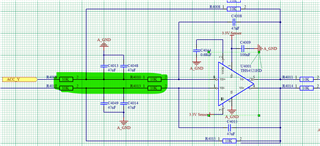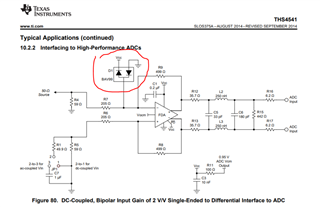Other Parts Discussed in Thread: THS4541, THS4521, THS4551, THS4561
Hi There
I'm using a THS4521-HT running off a unipolar 0-3.3V rail
There's a user case where the THS4521-HT could see a +/-12V signal on one of its inputs on rare occasions. As I have resistors in between the +/-12v signal (each one of the highlighted parts is 10k) and the op-amp inputs would I be correct in assuming the part won't be damaged as the 12/20k = 600uA input current is less than the maximum 10mA in the datasheet? (I don't need to red the signal in this scenario, its a fault condition)
same question in the scenario where the THS4521-HT is unpowered and there's a 1/-12v signal.
Kind Regards
Martin



